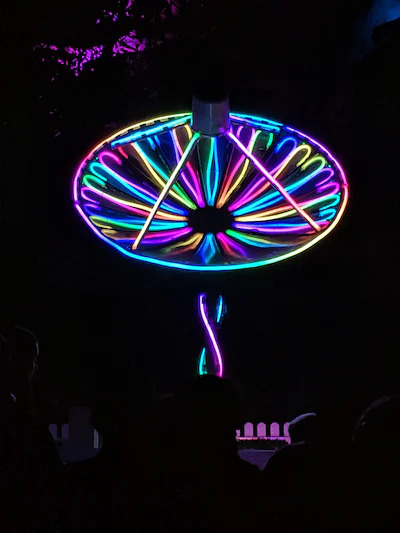创新背景
标准图像传感器可以捕捉光线强度和颜色,目前几乎每一部智能手机都安装了大约10亿个这样的传感器。依靠常见的、现成的传感器技术——即CMOS——这些相机已经变得越来越小,越来越强大,现在可以提供数千万像素的分辨率。但直到现在,他们仍然只能在二维空间中观察,捕捉平面的图像,就像绘画一样。
创新过程
斯坦福大学的研究人员发明了一种新方法,可以让标准图像传感器看到三维光线。也就是说,这些普通的相机很快就可以用来测量物体的距离。
光测量物体之间的距离目前只有通过专门的和昂贵的激光雷达系统才有可能。如果你看到过一辆自动驾驶汽车,你可以通过安装在车顶的技术立即认出它。这些设备中的大部分是汽车的激光雷达防撞系统,它使用激光来确定物体之间的距离。
激光雷达就像雷达一样,但用的是光而不是无线电波。通过向物体发射激光并测量反射回来的光,它可以知道一个物体有多远,它移动的速度有多快,它移动的距离是近还是远,最关键的是,它可以计算两个移动物体的路径是否会在未来的某一点相交。

对于工程师来说,这一进步提供了两个有趣的机会。首先,它可以实现百万像素分辨率的激光雷达——这在今天是不可能的。更高的分辨率将允许激光雷达在更大的范围内识别目标。例如,一辆自动驾驶汽车可能能够区分骑自行车的人和更远的行人——也就是说更快——并让汽车更容易避免事故。其次,现在任何可用的图像传感器,包括现在数十亿的智能手机,都可以在最少的硬件增加的情况下捕捉丰富的3D图像。
向标准传感器添加3D成像的一种方法是添加一个光源(很容易做到)和一个调制器(不那么容易做到),可以非常快地打开和关闭灯,每秒数百万次。在测量光线变化时,工程师可以计算距离。现有的调制器也可以做到这一点,但它们需要相对较大的功率。事实上,它们太大了,以至于完全不适合日常使用。
斯坦福大学的研究团队由集成纳米量子系统实验室(LINQS)和ArbabianLab合作,他们提出的解决方案依赖于一种被称为声共振的现象。该团队使用薄的铌酸锂晶片(一种因其电学、声学和光学特性而非常受欢迎的透明晶体),用两个透明电极涂覆建造了一个简单的声波调制器。

关键是,铌酸锂具有压电性。也就是说,当电流通过电极时,位于原子结构中心的晶格会改变形状。它的振动频率非常高,非常可预测和非常可控。并且,当它振动时,铌酸锂强调制光-加上一对偏振器,这种新的调制器有效地开关光,每秒几百万次。更重要的是,晶圆和电极的几何形状定义了光调制的频率,所以可以微调频率。改变几何形状,就会改变调制的频率。
用技术术语来说,压电效应是通过晶体产生声波,以理想的、可调的和可用的方式旋转光的偏振。正是这种关键的技术出发使团队获得了成功。然后,在调制器之后小心地放置一个偏振滤光片,将这种旋转转换为强度调制——使光变得更亮、更暗——有效地在一秒钟内开关光数百万次。
最重要的是,调制器的设计很简单,并且可以集成到一个使用现成相机的拟议系统中,就像那些在日常手机和数码单反相机中发现的那样。Atalar和他的顾问、电气工程副教授、项目的资深作者Amin Arbabian认为,这可能会成为一种新型紧凑、低成本、节能的激光雷达的基础——他们称之为“标准CMOS激光雷达”——可以应用于无人机、外星探测器和其他应用。
对所提出的调制器的影响是巨大的,它有可能为任何图像传感器增加缺失的3D尺寸。为了证明这一点,该团队在实验室台上建立了一个激光雷达系统的原型,该系统使用了一种商用数码相机作为感受器。作者报告说,他们的原型捕获了百万像素分辨率的深度图,同时需要少量的功率来操作光调制器。
更好的是,通过进一步的改进,Atalar说,该团队已经进一步减少了至少10倍于论文中已经报道的低阈值的能源消耗,他们相信,更大的能源减少是可以实现的。如果这真的发生了,未来小型激光雷达的标准图像传感器-和3D智能手机摄像头-可能成为现实。
创新价值
这种新方法可以让标准图像传感器看到三维光线,这意味着在未来这些普通相机很快就可以用来测量物体的距离。
创新关键点
该团队使用薄的铌酸锂晶片(一种因其电学、声学和光学特性而非常受欢迎的透明晶体),用两个透明电极涂覆建造了一个简单的声波调制器。
创新主体
斯坦福大学(Stanford University),全名小利兰·斯坦福大学(Leland Stanford Junior University),简称“斯坦福”,位于美国加州旧金山湾区南部帕罗奥多市境内,临近高科技园区硅谷(Silicon Valley),是私立研究型大学,全球大学高研院联盟成员。斯坦福大学于1885年成立,1891年开始正式招生,占地约33平方公里(8180英亩),是美国占地面积最大的大学之一。
New optics allow digital cameras to sense“depth”
Researchers at Stanford University have created a new method that allows standard image sensors to see light in three dimensions. In other words, these ordinary cameras could soon be used to measure the distance of objects.
Light measurement of the distance between objects is currently only possible with specialized and expensive liDAR systems. If you've ever seen a self-driving car, you can instantly recognize it through technology mounted on its roof. Most of these devices are cars' LiDAR collision avoidance systems, which use lasers to determine the distance between objects.
Lidar is like radar, but it uses light instead of radio waves. By shooting a laser at an object and measuring the light reflected back, it can know how far away an object is, how fast it is moving, whether it is moving close or far away, and crucially, it can calculate whether the paths of two moving objects will intersect at some point in the future.
For engineers, this advance presents two interesting opportunities. For one thing, it enables lidar with megapixel resolution -- something that is impossible today. The higher resolution will allow liDAR to identify targets over a larger area. For example, a self-driving car might be able to distinguish between cyclists and pedestrians who are farther away - that is, faster - and make it easier for the car to avoid accidents. Second, any image sensor available today, including the billions of smartphones now available, can capture rich 3D images with minimal hardware additions.
One way to add 3D imaging to standard sensors is to add a light source (easy to do) and a modulator (not so easy to do) that can turn lights on and off very quickly, millions of times per second. In measuring changes in light, engineers can calculate distances. Existing modulators can also do this, but they require relatively large amounts of power. In fact, they are so large that they are completely unsuitable for everyday use.
The solution proposed by the Stanford team, a collaboration between the Integrated NanoQuantum Systems Laboratory (LINQS) and ArbabianLab, relies on a phenomenon known as acoustic resonance. The team used a thin lithium niobate wafer, a transparent crystal highly popular for its electrical, acoustic and optical properties, to build a simple acoustic wave modulator coated with two transparent electrodes.
The point is, lithium niobate is piezoelectric. That is, when an electric current passes through an electrode, the lattice at the center of the atomic structure changes shape. It vibrates at a very high frequency, very predictable and very controllable. And, as it vibrates, lithium niobate emphasizes light production -- plus a pair of polarizers, this new modulator effectively switches light on and off millions of times per second. What's more, the geometry of the wafer and electrode defines the frequency at which the light is modulated, so the frequency can be fine-tuned. If you change the geometry, you change the frequency of modulation.
In technical terms, the piezoelectric effect is the generation of sound waves through crystals that rotate the polarization of light in an ideal, tunable and usable manner. It was this critical technical departure that made the team successful. A polarizing filter is then carefully placed after the modulator to convert this rotation into intensity modulation - making the light brighter and dimmer - effectively switching the light on and off millions of times a second.
Best of all, the modulator is simple to design and can be integrated into a proposed system that uses off-the-shelf cameras, like those found in everyday mobile phones and digital SLR cameras. Atalar and his advisor Amin Arbabian, associate professor of electrical engineering and senior author of the project, believe this could be the basis for a new type of compact, low-cost, energy-efficient lidar - which they call "standard CMOS LiDAR" - that could be applied to drones, alien probes, and other applications.
The impact on the proposed modulator is substantial and it has the potential to add missing 3D dimensions to any image sensor. To prove it, the team built a prototype liDAR system on a lab bench that uses a commercially available digital camera as a receptor. The authors report that their prototype captures depth maps at megapixel resolution while requiring a small amount of power to operate the light modulator.
Better yet, with further improvements, Atalar says the team has further reduced energy consumption by at least 10 times the low threshold already reported in the paper, and they believe that even greater energy reductions are achievable. If that happens, future standard image sensors for small lidar - and 3D smartphone cameras - could become a reality.
智能推荐
将涡旋光子束缚在简并光学腔中,创新拓扑量子模拟方法
2022-06-29基于简并腔中涡旋光子人工合成维度,研发拓扑量子模拟新方案。
涉及学科涉及领域研究方向将微小金刚石晶体创新应用于引力波探测器
2022-08-04伦敦大学学院领导的一项新研究表明,微小的钻石晶体可以用作一种非常灵敏的小型引力波探测器,能够测量引力波。
涉及学科涉及领域研究方向量子技术+探测学 | 微波量子照明有助于提高探测技术灵敏度
2022-06-29采用量子力学进行量子照明技术研究,利用光子联系进行灵敏探测。
涉及学科涉及领域研究方向通过孤子微梳探索光学频率梳的量子特性
2022-07-27利用孤子微型频率梳研究频率梳的量子特性,探索光学频率梳量子特性和量子纠缠的存在。
涉及学科涉及领域研究方向